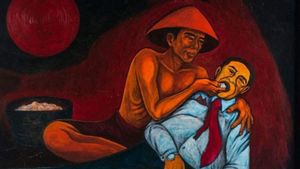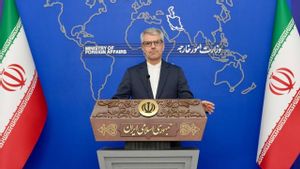JAKARTA - Research by the Australian National University (ANU) found that of the 7,000 recognized languages in the world, about half are currently threatened with extinction with 1,500 of them being at high risk.
"We found that without immediate intervention, language loss could triple in the next 40 years. And by the end of the century, 1,500 languages could be out of use," said co-author Professor Lindell Bromham, citing Euronews Dec. 20.
So what makes this mother tongue depressed? The study identified 51 new stressors in endangered languages. One surprising finding was that more years of schooling increased the level of language harm in some countries.
The researchers say it shows we need to build curricula that support bilingual education, encourage Indigenous language proficiency and use of regionally dominant languages.
"Out of the 51 factors or predictors we investigated, we also found some really unexpected pressure points. This includes road congestion," said Professor Bromham.
"We found that the more roads, connecting countries to cities, and villages to cities, the higher the risk of language being threatened. It's as if roads help dominant languages 'roll up' other, smaller languages," he explained.

But, he continued, contact with other local languages is not a problem. In fact, according to him, languages related to many other Indigenous languages tend to be less threatened with extinction.
What languages might be missing? According to UNESCO's study of endangered languages, regions with a very large number of languages on the verge of extinction include Africa, Eastern Siberia, Central Siberia, Northern Australia, Central America.
There is also the highlands of the Pacific Northwest. While other hotspots are Oklahoma and the Southern Cone of South America. To note, Africa is the most linguistically diverse continent in the world. People speak about 2,000 different languages.
New languages, such as Kenyan "sheng", a mix of English, Swahili, and mother tongue, are emerging. However, more than 300 languages have fewer than 10,000 speakers, a fact that makes them, according to the United Nations, threatened with extinction. 37 of them are endangered.
The European Union is made up of 28 Member States but has 24 official languages, as several Member States share the same official language. It is an endangered language due to the very low number of native speakers, while some dialects, although spoken by a number of people, are not officially recognized.
It is estimated that between 7 million and 10 million people are native speakers of Catalan in Spain, France and Italy. However, Malta's total population of 420,000 people are all English-Maltaic bilingual.
On the other hand, Irish, the first state language in Ireland, has no official status in Northern Ireland, where it is characterized as a regional language and has been classified by UNESCO as "critically endangered".

What about endangered languages in Australia? Published in Nature Ecology and Evolution, the study also finds important lessons for preserving the many endangered languages spoken by Australia's First Nations people.
"Australia has the dubious distinction of being one of the countries with the highest rates of language loss worldwide," said Professor Felicity Meakins, from the University of Queensland and a co-author of the study.
"Before colonization, more than 250 First Nations languages were spoken, and multilingualism was the norm. Today, only 40 languages are still spoken and only 12 are being learned by children," he said.
"First Nations languages need funding and support. Australia spends only US$20.89 per capita Indigenous people on the language, which is very poor compared to Canada's US$69.30 and New Zealand's US$296.44," Meakins concludes.
As the world enters the UNESCO Decade of Indigenous Languages in 2022, the findings of this study are an important reminder that more action is urgently needed to preserve languages at risk.
"When language is lost, or 'Sleep' as we say for languages that are no longer spoken, we lose so much of the diversity of our human culture. Each language is brilliant in its own way," Professor Bromham said.
The English, Chinese, Japanese, Arabic, and French versions are automatically generated by the AI. So there may still be inaccuracies in translating, please always see Indonesian as our main language. (system supported by DigitalSiber.id)













